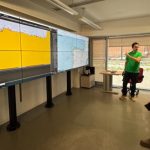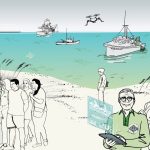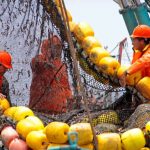The New England groundfish fleet, provides near real-time information to improve stock assessments and fisheries science in the region. The Study Fleet, a pilot project of the Cooperative Research Programme at NOAA’s Northeast Fisheries Science Center (NEFSC), began by assembling commercial New England groundfish vessels willing to provide high resolution or haul-by-haul self-reported data on catch, effort and environmental conditions, while conducting normal fishing operations.
Goethel, captain of the F/V Ellen Diane, believes that being involved in the process is critical. He added that such study programme would help fishermen to understand the basic atmosphere of the ocean and accordingly they can do their fishing. He also said that getting the environmental data back from NEFSC confirms what I have been seeing in terms of where the fish are. According to him one degree change in water temperature can mean cod or another species you are fishing are not where you thought they would be. The data help fishermen understand why they are catching certain fish at certain places at certain times, says Goethel.
Mike Palmer, a NEFSC fisheries biologist, who coordinates the Study Fleet project, explained that the new system is much more accurate than programs previously used. He stressed that the data these vessels can provide using FLOUNDERS (for Fisheries Logbook Data Recording Software) is more accurate, detailed and comprehensive than would be obtained without deploying expensive observers who are part of the Northeast Fishery Observer Program.
It is said that the Study Fleet vessels are equipped with the computer software programme and the captains are trained on how to use the electronic logbook system, which includes a gear-mounted temperature-depth probe and a global positioning system (GPS) unit to track precise time and locations of fishing efforts. Palmer told that it is necessary to build trust between fishermen and scientists and the industry has to trust the scientists enough to want to provide accurate data, and the scientists have to trust the industry enough to believe in the quality of the data.








